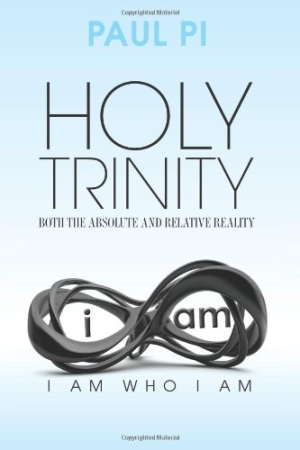Holy Trinity: Both the Absolute and Relative Reality
I AM THAT I AM
Who are we, and what is reality? Paul Pi says the answers are intertwined.
Holy Trinity: Both the Absolute and Relative Reality, by Paul Pi, takes an innovative, complicated look at the spiritual realm that connects individuals to each other and to a greater cosmic reality. The tangled, multistrand, black infinity symbol on the cover aptly represents the complexity and order of Pi’s ideas.
The book examines the relationship between our own individual experiences of the world—relative reality—and the broader truth of the world beyond our own experiences and perception—absolute reality. Pi asserts that if people grow in understanding of absolute reality, they will become their “authentic selves.” “The authentic selves are unnameable and normally referred to as soul or Holy Spirit,” Pi writes.
What may at first feel like abstractions have decidedly practical applications—ones that may prove divisive to readers’ previous beliefs: “Absolutely, there is only one God as worshiped by all religions but, relatively, there can be numerous and even infinite versions of God.”
Throughout, Pi makes sparsely supported statements that cause confusion, such as “It has already been confirmed scientifically the ‘origin matter’ of all creations is the make up of consciousness.” Unclear wording and lack of transitional words or punctuation compounds the issues readers will face in unpacking these kinds of statements.
The book is thorough in the scope of topics it discusses: the natural world, the will of God, karma, atonement, meditation, and more. The writing is dense and often too intellectual for most casual readers’ patience. For instance, the conclusion lists twenty-five summary statements from the book, including “The space-time continuum of locality is the holographic projection from the domain of non-locality, which is itself constantly at the eternal moment of now and here.”
The book’s appendices examine the basic beliefs and tenets of Christianity, Taoism, Islam, Hinduism, and Buddhism and point out ways the religions all resonate and agree with each other.
Boldfaced quotes and scripture passages open each chapter and are sprinkled throughout the text. Readers are not given much of a sense of who Pi is or what his credentials are. It’s evident that he has researched and examined religious philosophy, but the audience will likely want to know more about the author. A bibliography would also be helpful.
The title of the book and tagline on the book cover, “I Am Who I Am,” are both decidedly biblical and Christian-sounding. But readers of a Christian faith will find the content of the volume stretches too far past what they believe about God. For example, that all religions are really worshiping the same God. This book is best suited to readers who, rather than being mainstream Christians, are abstract spiritual thinkers who are optimistic about God but aren’t satisfied within the typical confines of the world’s religions.
Reviewed by
Melissa Wuske
Disclosure: This article is not an endorsement, but a review. The publisher of this book provided free copies of the book and paid a small fee to have their book reviewed by a professional reviewer. Foreword Reviews and Clarion Reviews make no guarantee that the publisher will receive a positive review. Foreword Magazine, Inc. is disclosing this in accordance with the Federal Trade Commission’s 16 CFR, Part 255.

